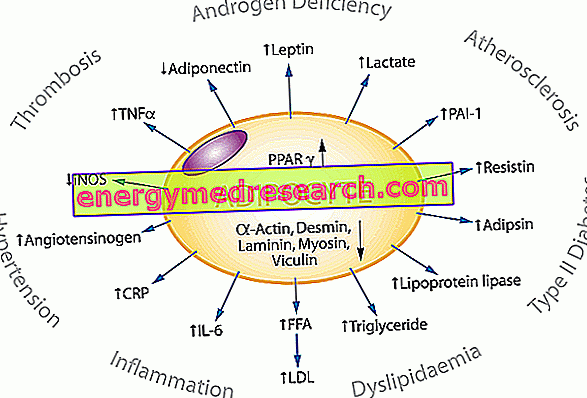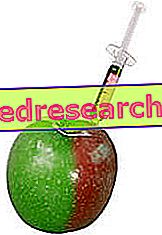
What is Paliperidone Janssen and what is it used for?
Paliperidone Janssen is an antipsychotic medicine indicated for the maintenance therapy of schizophrenia in adults with disease already established by treatment with paliperidone or risperidone . In some patients who have reacted positively to oral therapy with paliperidone or risperidone in the past, Paliperidone Janssen can be used, even without a previous stabilization of symptoms, if the symptoms are mild to moderate and if an injectable treatment with prolonged action is required. Schizophrenia is a mental illness characterized by symptoms such as disorganization of thought and language, hallucinations (seeing or hearing non-existent things), suspiciousness and false beliefs. This medicine is the same as Xeplion, already authorized in the European Union (EU). The company that makes Xeplion has agreed that its scientific data can be used for Paliperidone Janssen ("informed consent").
How is Paliperidone Janssen used?
Paliperidone Janssen is available as a prolonged release suspension for injection in pre-filled syringes (25 mg, 50 mg, 75 mg, 100 mg and 150 mg). The expression "prolonged release" means that the active ingredient, paliperidone, is released slowly over a few weeks after the injection. The medicine can only be obtained with a prescription. The treatment begins with two injections, one week apart from the other, in order to increase the levels of paliperidone in the blood, and continues with maintenance injections on a monthly basis. The dosage of the two initial injections is 150 mg on the first day (day 1) and 100 mg on day 8. The monthly maintenance dose is 75 mg. The dose can be adjusted depending on the benefit to the patient and tolerance to therapy. Day 1 and 8 injections are administered in the deltoid muscle (upper part of the shoulder), while the maintenance dose can be injected into the deltoid muscle or gluteus. For more information on the use of Paliperidone Janssen, including how to adjust the dose, see the summary of product characteristics (also part of the EPAR).
How does Paliperidone Janssen work?
The active substance in Paliperidone Janssen, paliperidone, is an "atypical" antipsychotic drug, as it differs from previous antipsychotic drugs available since the 1950s. Paliperidone is a product of the active breakdown (metabolite) of risperidone, another antipsychotic drug used in the treatment of schizophrenia since the 1990s. In the brain it binds to more receptors on the surface of nerve cells. In this way the signals transmitted between the brain cells by "neurotransmitters" are disturbed, chemical substances that allow communication between nerve cells. Paliperidone acts primarily by blocking receptors for dopamine and 5-hydroxytryptamine neurotransmitters (also called serotonin), implicated in schizophrenia. This action contributes to the normalization of brain activity and reduces the symptoms of the disease. Paliperidone is authorized in the European Union (EU) under the name Invega since 2007 for the oral treatment of schizophrenia. In Paliperidone Janssen, paliperidone has been linked to a fatty acid that allows the slow release of the medicine after the injection, whose action has therefore a prolonged duration.
What benefit has Paliperidone Janssen shown during the studies?
Since paliperidone was already authorized in the EU under the name Invega, the company used some data used for Invega to support the use of Paliperidone Janssen. Six short-term studies with Paliperidone Janssen were performed. Of these, four, involving 1, 774 adults with schizophrenia, compared Paliperidone Janssen with placebo (a dummy treatment). Two out of 1 178 patients compared Xeplion with a long-acting risperidone injection (administered with risperidone oral supplements). The main measure of effectiveness used in the studies was the change in patients' symptoms after 9-13 weeks, based on a standard evaluation scale for schizophrenia. Two long-term studies, lasting about a year, were also performed with Paliperidone Janssen. One of these, involving 410 adults, compared Paliperidone Janssen with placebo, examining the efficacy of Paliperidone Janssen in preventing the recurrence of severe symptoms. The second study, conducted on 749 adults, compared Paliperidone Janssen with a long-acting risperidone injection (administered with risperidone oral supplements) and observed the variation in patients' symptoms. Paliperidone Janssen was more effective than placebo in reducing the symptoms of schizophrenia in the short term. In four short-term studies, the reduction in symptom scores in patients treated with Paliperidone Janssen was greater than that seen in patients treated with placebo. Paliperidone Janssen was also effective in preventing long-term relapse: the number of patients with relapse in the group treated with Paliperidone Janssen was lower than that recorded in the placebo group.
Paliperidone Janssen was as effective as risperidone long-acting injection in reducing schizophrenia in one of the short-term studies. In two other studies (long and short term respectively), Paliperidone Janssen did not show the same efficacy as risperidone.
What is the risk associated with Paliperidone Janssen -?
The most common side effects of Paliperidone Janssen are insomnia, headache, anxiety, upper respiratory tract infection (colds), injection site reactions, parkinsonism (neurological symptoms such as tremor and difficulty in muscle control), weight gain, akathisia (motor restlessness), agitation, drowsiness, nausea, constipation, dizziness, muscle and bone pain, tachycardia (rapid heartbeat), tremor, abdominal pain (stomach ache), vomiting, diarrhea, fatigue and dystonia (involuntary contractions of muscles). Of these, akathisia and somnolence appear to be dose related. For the full list of all side effects reported with Paliperidone Janssen, see the package leaflet. Paliperidone Janssen should not be used in people who are hypersensitive (allergic) to paliperidone or any of the other ingredients or to risperidone.
Why has Paliperidone Janssen been approved -?
The Agency's Committee for Medicinal Products for Human Use (CHMP) found that, based on the results of comparative studies between Paliperidone Janssen and placebo and risperidone, the medicine offers benefits to patients with schizophrenia. Since it is a prolonged release suspension, it also has the advantage of being administered at monthly intervals. The Committee decided that Paliperidone Janssen's benefits are greater than its risks and recommended that it be given marketing authorization.
What measures are being taken to ensure the safe and effective use of Paliperidone Janssen -?
A risk management plan has been developed to ensure that Paliperidone Janssen is used as safely as possible. Based on this plan, safety information has been included in the summary of product characteristics and the package leaflet for Paliperidone Janssen, including the appropriate precautions to be followed by healthcare professionals and patients. Further information is available in the summary of the risk management plan.
More information on Paliperidone Janssen -
On 5 December 2014, the European Commission issued a marketing authorization for Paliperidone Janssen, valid throughout the European Union. For more information about treatment with Paliperidone Janssen, read the package leaflet (also part of the EPAR) or contact your doctor or pharmacist. Last update of this summary: 12-2014.



